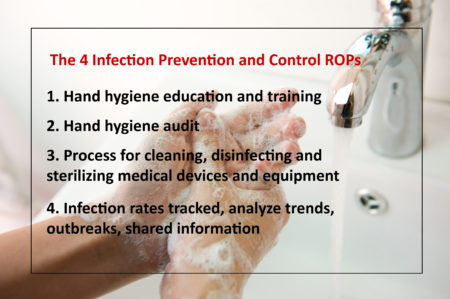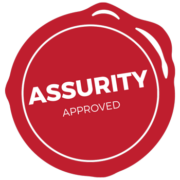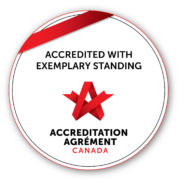Bulletin #13 – Communication
Communication is one of our Accreditation 2018 Quality & Safety themes. The goal is to communicate effectively at all levels within the organization and with external stakeholders (i.e. – Fraser Health). The communication theme includes the resident and families being involved with care.
Within this theme there are five Required Organizational Practices (ROPs) that must be met to successfully complete Accreditation. They include:
- Resident Identification –In partnership with residents and families, there must be at least two person-specific identifiers are used to confirm that clients receive the service or procedure intended for them (i.e. – medication administration).
- The ‘Do Not Use’ List of Abbreviations – A list of abbreviations and symbols that are NOT to be used due to increased risk of error, have been identified and implemented.
- Information Transfer at Care Transitions – Information relevant to the care of the resident is communicated effectively during resident transfer in and out of care.
- Medication Reconciliation at Care Transitions – Medication reconciliation is a process whereby the most current medication history is obtained in partnership with the resident, family, and care team (pharmacist, nurse, and physician) to communicate accurate and complete information about medication lists across care transitions.
- Medication Reconciliation as a Strategic Priority – A documented and coordinated medication reconciliation process is used to communicate complete and accurate information about medications taken when residents transfer in and out of the care home.
ROP 1 Resident Identification
Surveyor Question: At Menno Place, how does the team ensure that resident identifiers are used prior to medication administration? How many resident identifiers are required?
Evidence:
At least two resident identifiers are used to confirm that the right resident receives the right medications, procedures or services (i.e. – lab). Staff are required to verify resident identity before providing any service or care to a resident, often with the involvement of the resident or family.
Menno Home/Hospital uses the following identifiers:
- Photographs of residents
Menno Home
- Electronic Medication Administration Record (eMAR)
- Resident room door
- Medication boxes
- Point of Care
- Resident Profile in Point Click Care
- Picture books
Menno Hospital
- Medication Administration Record (MAR)
- Medication boxes
- Point of Care
- Resident cork/Bulletin board
- Picture books
- ROF Binders
- Second Verification
New staff or those unfamiliar with the resident for which treatment is to be performed, in addition to using photographs will verify the residents identification by consulting with another team member who is aware of the resident’s identification.
ROP 2 The “Do Not Use” List of Abbreviations
Surveyor Question: At Menno Place, how does the organization ensure that incorrect abbreviations and symbols which may cause errors are not used on any written, printed or electronic materials?
Evidence:
- “Do Not Use” List is on each unit and easily available.
- Every item on the “Do Not Use” List is no longer on any written, printed, or electronic document.
- Nurses and physicians are made aware of the list and the policy.
- Preprinted orders are reviewed annually by the Medical and Medication and Safety Advisory Committee and are free of ‘Do Not Use’ abbreviations; none are present on any written, printed or electronic medication documentation.
- Audits are completed regularly to ensure compliance with the DO NOT USE lists.
ROP 3 Information Transfer at Care Transitions (transfer in and out of care homes)
Surveyor Question: How does the team ensure that information is transferred in an accurate and timely manner at transition points?
Evidence:
At Menno Place we work to effectively communicate about the care of residents during care transitions amongst the care team (internal and external).
Effective communication is a critical element in improving resident safety, particularly with transition points such as handover of resident care from shift to shift or from service to service (i.e. from the care home to emergency departments).
Transition points include transfer between units, shift changes and breaks within a shift. Also included are external transfers to another care home or a transfer to an acute care site (ER). At each of these points, it is essential that information be transferred in an accurate and timely way.
Internal Transfers
Methods that ensure timely and accurate transfers between units include a combination of verbal and written information. Examples include: the electronic health record, the paper health record, verbal report nurse to nurse.
Shift Changes and Breaks
Verbal and written reports are used for shift changes and breaks. Written reports include electronic documentation and shift summary forms.
External Transfers
There are a number of practices for ensuring accurate and timely transfer of information when a resident is discharged or transferred including faxing, sending information on transfer sheets, using the telephone or giving verbal information face to face to emergency personnel. A standard transfer sheet is located in each resident record for easy completion. Physician discharge summaries are standardized.
Care Conference and Rounds
Face to face conversation with electronic and paper records are used to verify and plan actions and goals of care with the resident, family and care team. These meetings include input from physicians, nurses, health care assistants, OT, social workers, recreation staff, pastoral care staff and others as appropriate.
ROP 4 Medication Reconciliation at Care Transitions
Surveyor Question: What process is in place to ensure that the best possible medication history is obtained and that the resident gets the right medication orders?
Evidence:
Medication reconciliation is conducted in partnership with the resident, family, or caregiver to communicate accurate and complete information about medications taken across care transitions. All new resident move-ins, re-admissions back to residential care home from an acute care facility or transfer out of a residential care home, have medication orders reconciled to ensure accuracy and continuity of medications.
The team reconciles the resident’s medications with the involvement of the resident, family or caregiver at the beginning of service when medication therapy is a significant component of care. Reconciliation is repeated periodically as appropriate including when transferred to another service or discharged.
ROP 5 Medication Reconciliation as a Strategic Priority
Surveyor Question: How does Menno Place demonstrate its commitment to medication reconciliation?
Evidence:
At Menno Place, our organizational policy indicates our commitment to medication reconciliation. Our policy indicates the roles, responsibilities and care transitions where medication reconciliation is required. A medication reconciliation process is used to communicate complete and accurate information and medications across care transitions.
Nurses are educated in medication reconciliation through:
- Orientation checklists
- Education sessions (nurses meetings)
- Sign off sheets on policies and procedures when updates occur
The Medical and Medication Safety and Advisory Committee (MMSAC) is an interdisciplinary committee composed of pharmacists, nursing leaders and physicians. They review and approve the policy annually and with any changes.








